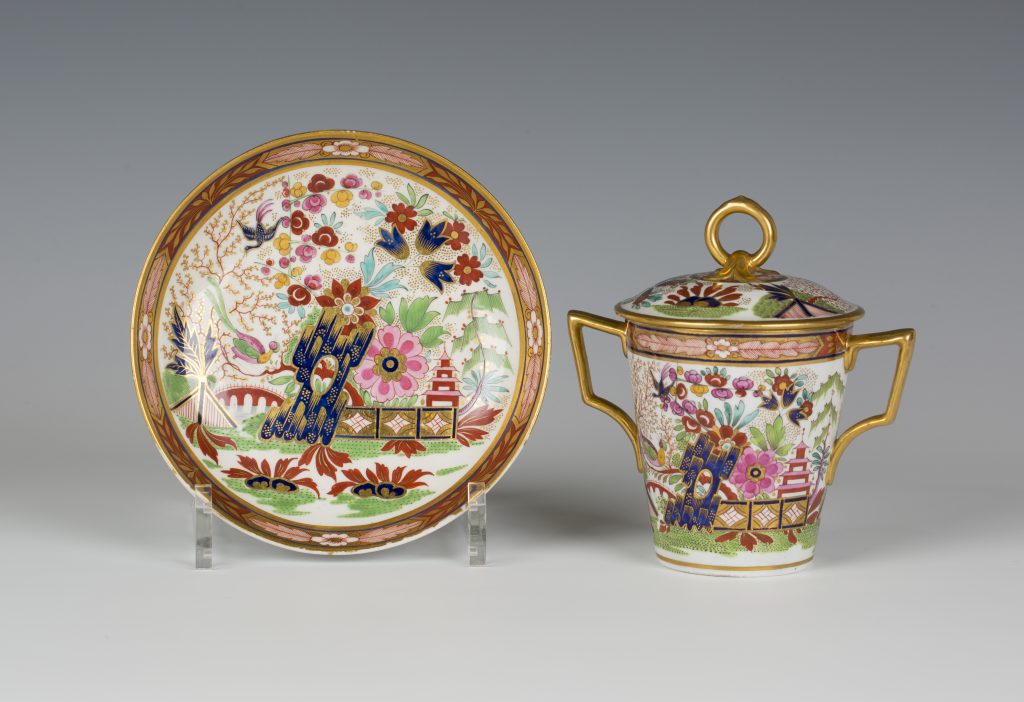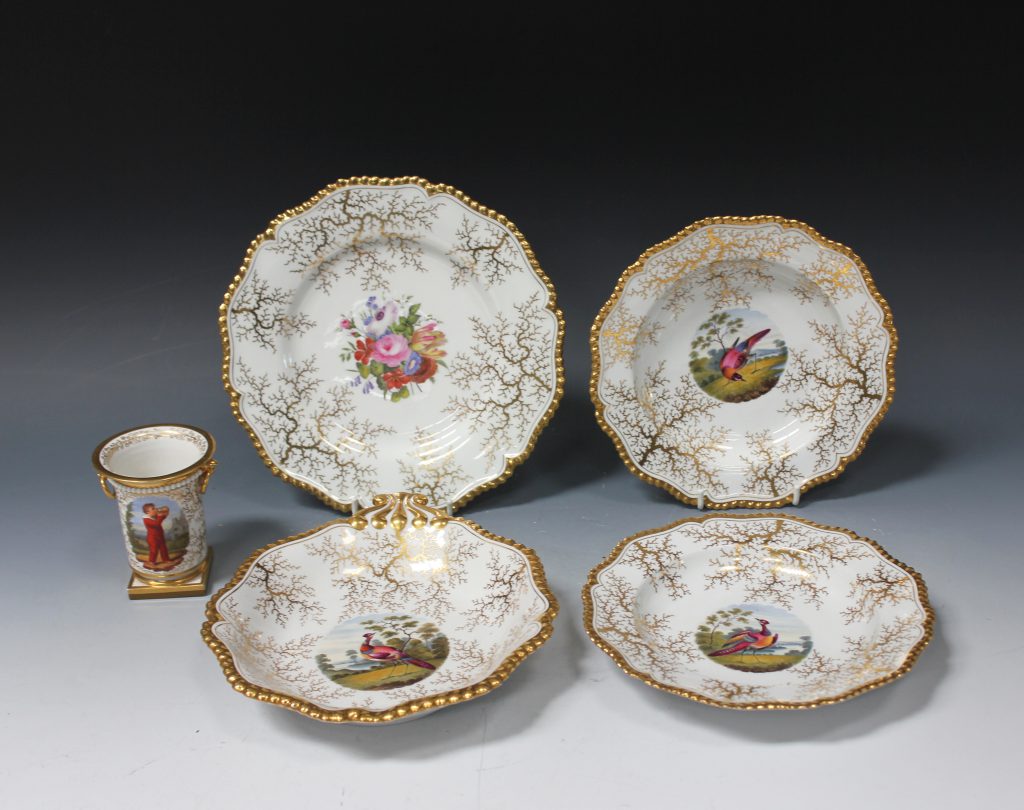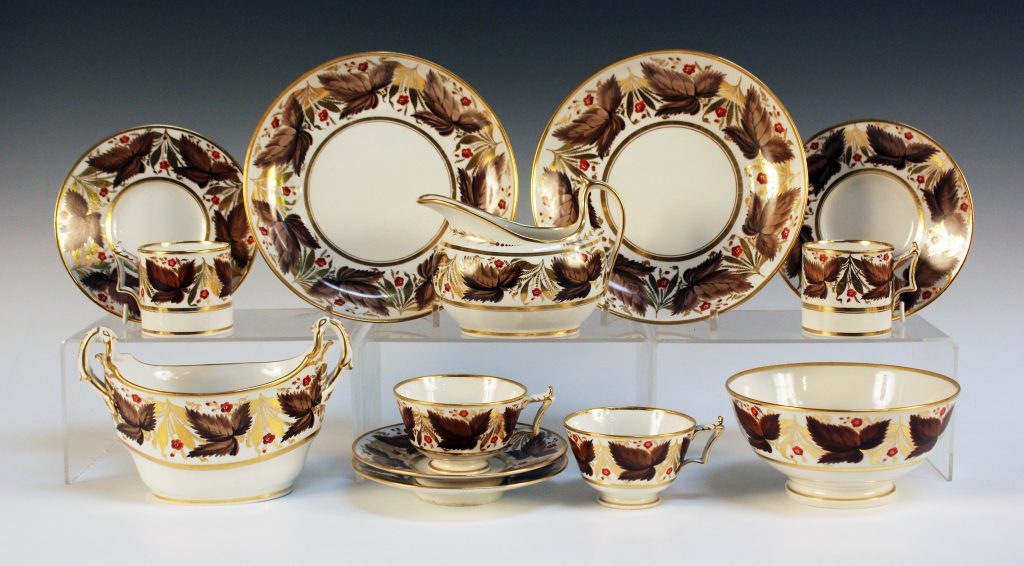
The Worcester porcelain factory is amongst the finest and longest lived of the English porcelain manufacturers. The pieces made in the late 18th and early 19th centuries are outstanding.
The first period of Worcester porcelain manufacture is known as the ‘Dr Wall Period’ (1751-1776) after one of its founding shareholders John Wall. In 1783 the firm’s London agent, Thomas Flight, bought the Worcester factory for his sons Joseph and John. This new period was marked by a new paste which produced a more pearly white body. The style changed too reflecting the fashion for the Neo-Classical in both decoration and form. John Flight travelled in France to study the latest French porcelain designs. In 1788 King George III and Queen Charlotte toured Flight’s Worcester Porcelain factory and ordered a breakfast service.
After his father’s death in 1792 Joseph Flight formed a partnership with Martin Barr. The firm traded as Flight & Barr between 1792 and 1804, then as the partnership between the families changed it became Barr, Flight & Barr until 1813 when Martin Barr died and the company became Flight, Barr and Barr.
After 1780 the gilding was applied with mercury and burnished to a bright finish. This can be seen in the examples illustrated from Toovey’s auctions.
I adore the richness of the japanesery decoration on the Barr, Flight & Barr Worcester porcelain chocolate cup, cover and stand which dates from between 1807 and 1813. The tapering cup, flanked by its angular gilt handles, is painted with a pagoda, exotic birds and flowers in a fenced garden scene. It sold for £500.
It was during the later Flight, Barr and Barr period (1813-1840) that some of the finest quality wares were produced.
The wares from this period were often decorated with finely enamelled panels on coloured grounds. These grounds were applied by the oil and dusting process which gave a smoother, deeper finish than those achieved with a brush.
Unusually the painters at Worcester were paid by the hour, not by the number of pieces decorated. The factory employed some of the leading ceramic painters of the period including Charles Stinton. Charles was celebrated for his depictions of exotic birds and flowers.

His fine enamel work can be seen in the panels of birds and flowers on the Flight, Barr and Barr dessert dishes. Each is framed with gilded decoration in a stylized seaweed design against a white ground. The collection made £380.

The autumnal colours of the painted bands of brown and gilt leaf sprays and small red flowers on the Flight Barr & Barr Worcester porcelain tea and coffee service are beautifully conceived and executed. It dates from around 1820 and was remarkably complete comprising of twenty tea cups, sixteen coffee cans, twenty-eight saucers, milk jug, sugar basin, two slop bowls and two saucer dishes. The part set realised £1900.
It is the finest pieces which attract strong competition from collectors, and condition is important. However, single cups and saucers, coffee cans, dishes and bowls can be found at auction very reasonably and provide a great way to begin to collect George III and Regency English porcelain from the late 18th and early 19th centuries with its rich variety of designs and beautiful decoration.
By Rupert Toovey, a senior director of Toovey’s, the leading fine art auction house in West Sussex, based on the A24 at Washington. Originally published in the West Sussex Gazette.